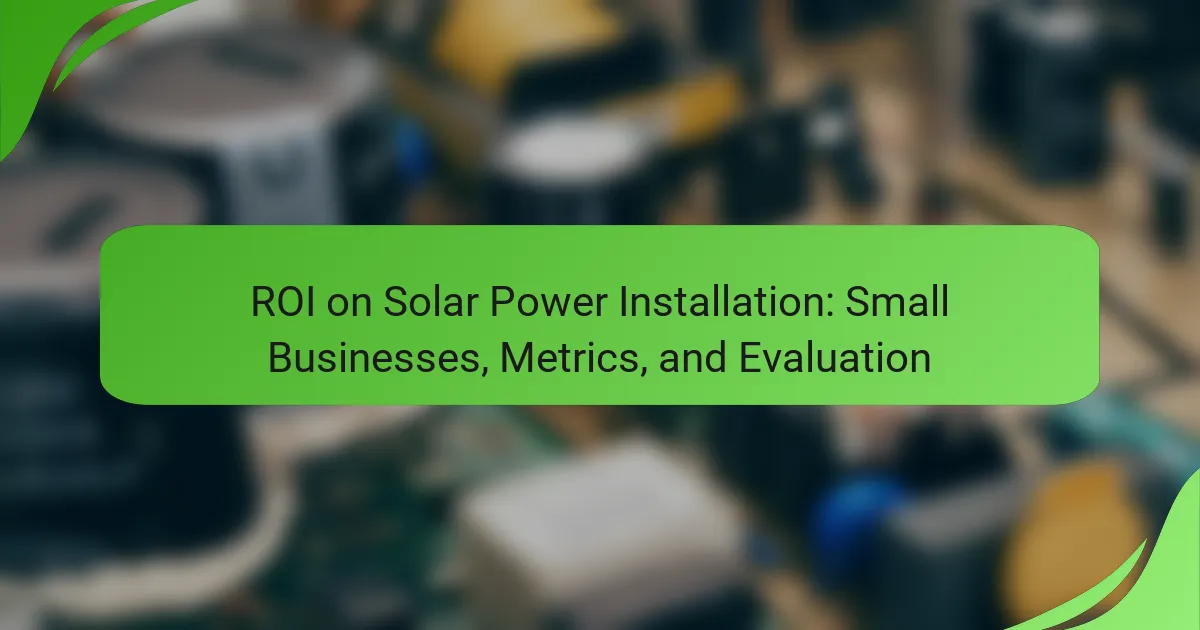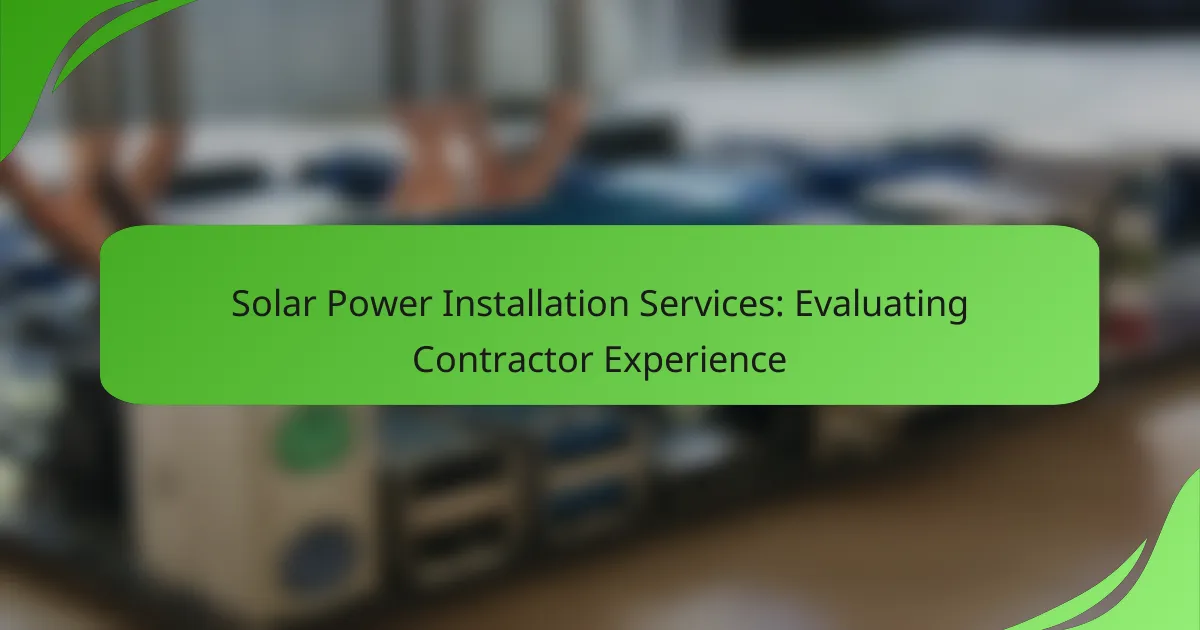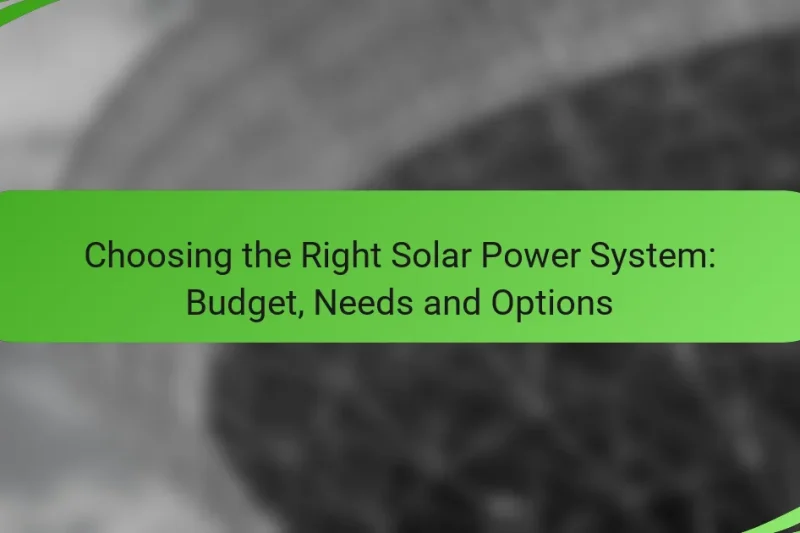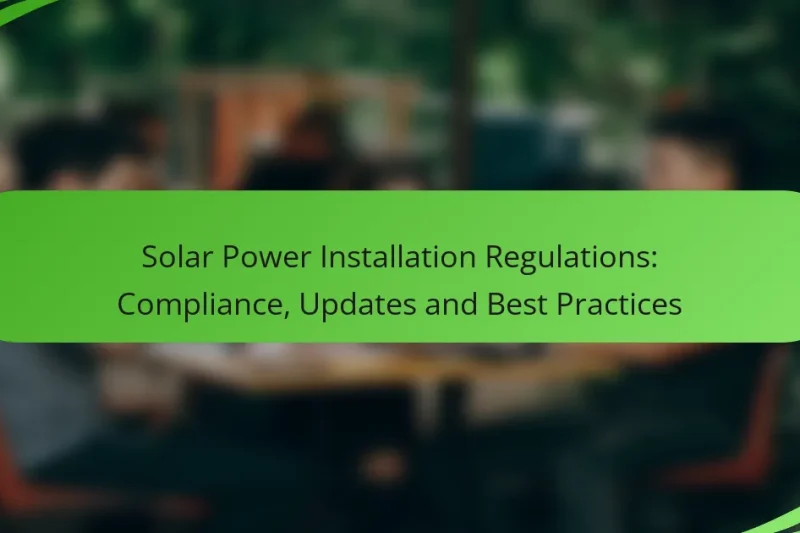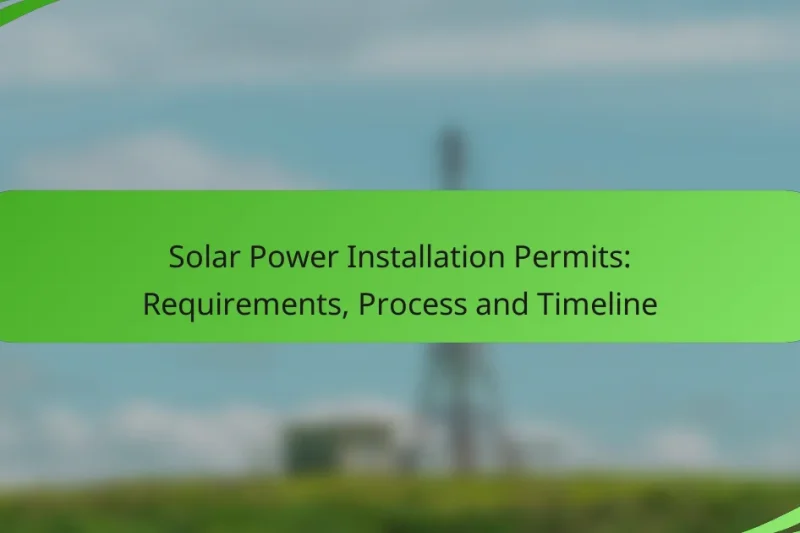Choosing the right solar power system involves understanding your energy needs, budget, and the various options … Choosing the Right Solar Power System: Budget, Needs and OptionsRead more
Solar power installation services provide an effective way to harness renewable energy, offering benefits such as reduced energy costs and enhanced property value. In California, selecting the right service involves evaluating factors like licensing, customer reviews, and financing options to ensure compliance with state regulations. The installation process encompasses several essential steps, from initial consultations to final grid connections, ensuring a seamless transition to solar energy.
Solar Power Installation: Increasing Home Value in Competitive Markets
Installing solar power systems can greatly increase a home’s value in competitive real estate markets by … Solar Power Installation: Increasing Home Value in Competitive MarketsRead more
ROI on Solar Power Installation: Small Businesses, Metrics, and Evaluation
Small businesses can significantly benefit from evaluating the return on investment (ROI) of solar power installations … ROI on Solar Power Installation: Small Businesses, Metrics, and EvaluationRead more
Net Metering Policies: Benefits, Limitations and Impact on Decisions
Net metering policies play a crucial role in promoting renewable energy by allowing homeowners to receive … Net Metering Policies: Benefits, Limitations and Impact on DecisionsRead more
Solar Power Installation Services: Evaluating Contractor Experience
When considering solar power installation services, it’s essential to evaluate the experience and qualifications of potential … Solar Power Installation Services: Evaluating Contractor ExperienceRead more
Solar Power Installation Regulations: Compliance, Updates and Best Practices
Understanding the regulations surrounding solar power installation is crucial for ensuring safety, reliability, and compliance. Key … Solar Power Installation Regulations: Compliance, Updates and Best PracticesRead more
Solar Power Installation Permits: Requirements, Process and Timeline
Obtaining solar power installation permits in California requires compliance with various local regulations and safety standards. … Solar Power Installation Permits: Requirements, Process and TimelineRead more
Solar Power: Health Benefits and Considerations
Solar power presents numerous health benefits, particularly in urban areas, by decreasing reliance on fossil fuels … Solar Power: Health Benefits and ConsiderationsRead more
Local Zoning Laws: Requirements, Challenges and Solutions
Local zoning laws play a crucial role in shaping land use and development within municipalities, ensuring … Local Zoning Laws: Requirements, Challenges and SolutionsRead more
Hidden Costs of Solar Power Installation: Expectations and Considerations
When considering solar power installation, homeowners must look beyond the initial purchase price to understand the … Hidden Costs of Solar Power Installation: Expectations and ConsiderationsRead more
What are the benefits of solar power installation services?
Solar power installation services offer numerous advantages, including cost savings, environmental benefits, and increased property value. By harnessing sunlight, homeowners can reduce their energy bills and contribute to a more sustainable future.
Cost savings on energy bills
One of the primary benefits of solar power installation is the significant reduction in energy bills. Homeowners can save anywhere from 20% to 50% on their monthly electricity costs, depending on their location and energy consumption. Over time, these savings can add up to thousands of dollars.
Additionally, many states offer net metering, allowing homeowners to sell excess energy back to the grid, further enhancing savings. It's essential to evaluate local energy rates and potential savings before installation.
Environmental impact reduction
Installing solar panels greatly reduces your carbon footprint by decreasing reliance on fossil fuels. Solar energy is a clean, renewable resource that produces no emissions during operation, contributing to a healthier environment.
By switching to solar power, homeowners can help mitigate climate change and reduce air pollution. This shift not only benefits the planet but also promotes a sustainable energy future for generations to come.
Increased property value
Homes equipped with solar power systems often see an increase in property value. Studies indicate that solar installations can raise home values by approximately 3% to 4% on average, making them an attractive investment for potential buyers.
Moreover, homes with solar panels tend to sell faster than those without, as more buyers are seeking energy-efficient features. This trend highlights the growing demand for sustainable living solutions in the real estate market.
Energy independence
Solar power installation promotes energy independence by reducing reliance on external energy sources. Homeowners can generate their own electricity, which can be particularly beneficial during power outages or rising energy prices.
By investing in solar energy, individuals can take control of their energy needs and protect themselves from fluctuating utility rates. This autonomy fosters a sense of security and stability in energy consumption.
Government incentives and rebates
Many governments offer incentives and rebates to encourage solar power installation, making it more affordable for homeowners. These can include tax credits, grants, and low-interest loans, which can significantly reduce the upfront costs of solar systems.
In the United States, for example, the federal solar tax credit allows homeowners to deduct a substantial percentage of the installation costs from their federal taxes. It's crucial to research local programs and incentives to maximize savings when considering solar installation.
How to choose a solar power installation service in California?
Choosing a solar power installation service in California involves assessing several key factors, including licenses, customer feedback, pricing, and warranty options. Focus on reputable companies that comply with state regulations and offer transparent financing solutions.
Check for licenses and certifications
Ensure that the solar installation service holds the necessary licenses and certifications required in California. This includes being a licensed contractor and having certifications from recognized organizations like the North American Board of Certified Energy Practitioners (NABCEP).
Verification of these credentials not only guarantees compliance with local regulations but also indicates a commitment to industry standards. You can typically find this information on the company’s website or by requesting documentation directly.
Evaluate customer reviews and testimonials
Customer reviews and testimonials provide insight into the quality of service and customer satisfaction. Look for feedback on platforms like Yelp, Google Reviews, and the Better Business Bureau to gauge the experiences of previous clients.
Pay attention to recurring themes in reviews, such as timeliness, professionalism, and post-installation support. A company with a high number of positive reviews is often a safer choice.
Compare pricing and financing options
Pricing for solar installation can vary significantly based on system size, technology, and installation complexity. Obtain multiple quotes from different providers to compare costs effectively.
Additionally, explore financing options such as solar loans, leases, or power purchase agreements (PPAs). Understanding the total cost of ownership, including potential savings on electricity bills, will help you make a more informed decision.
Assess warranty and maintenance offerings
Warranties and maintenance plans are crucial for protecting your investment in solar power. Check what warranties are offered on both the solar panels and the installation work, as these can vary widely between companies.
Inquire about maintenance services, including regular inspections and repairs. A solid warranty combined with proactive maintenance can ensure your solar system operates efficiently for many years.
What is the solar installation process?
The solar installation process involves several key steps to ensure a successful setup of solar energy systems. This typically includes an initial consultation, design development, obtaining necessary permits, and finally, the installation and connection to the grid.
Initial consultation and site assessment
The initial consultation is crucial for understanding the client's energy needs and evaluating the site for solar potential. During this phase, professionals assess factors such as roof orientation, shading, and available space for solar panels.
Homeowners should prepare by gathering utility bills and considering their energy consumption patterns. This information helps installers recommend the most suitable system size and configuration.
Design and proposal development
After the site assessment, the design phase begins, where a tailored solar system layout is created. This includes selecting the type of solar panels, inverters, and other components based on the client's needs and site characteristics.
A detailed proposal is then presented, outlining costs, expected energy savings, and return on investment. Clients should review this proposal carefully and ask questions to ensure clarity on all aspects before proceeding.
Permitting and approvals
Before installation can begin, necessary permits and approvals must be obtained from local authorities. This process varies by location and may involve submitting plans and paying fees.
Homeowners should be aware of local regulations and zoning laws that may affect installation. Engaging with experienced installers can streamline this process, as they often have established relationships with permitting agencies.
Installation and grid connection
Once permits are secured, the installation phase commences. This involves mounting solar panels, connecting wiring, and installing inverters. The entire process can take a few days to several weeks, depending on system complexity and weather conditions.
After installation, the system must be connected to the grid, which may require an inspection by local utility companies. Homeowners should ensure they understand the interconnection agreement and any incentives available for solar energy use.
What are the costs associated with solar power installation?
The costs associated with solar power installation can vary significantly based on factors such as system size, location, and installation complexity. Generally, homeowners can expect to spend anywhere from several thousand to tens of thousands of dollars for a complete solar setup.
Average installation costs in California
In California, the average cost for solar power installation typically ranges from $15,000 to $30,000 before any incentives or rebates. This price range reflects the high demand for solar energy in the state, as well as the competitive market among installers.
Factors influencing these costs include the size of the solar system, the type of panels used, and additional features like battery storage. Homeowners should obtain multiple quotes to find the best price and service.
Financing options available
Several financing options can help homeowners manage the costs of solar power installation. Common choices include solar loans, leases, and power purchase agreements (PPAs). Each option has its pros and cons, depending on the homeowner's financial situation and long-term goals.
For example, solar loans allow homeowners to own the system outright, leading to potential long-term savings, while leases and PPAs typically require little to no upfront costs but may limit ownership benefits. Exploring state and federal incentives can also enhance affordability.
Long-term savings analysis
Investing in solar power can lead to significant long-term savings on electricity bills. Homeowners often see a reduction in energy costs of 50% or more, depending on their energy consumption and the size of the solar system installed.
Additionally, many states offer incentives that can further reduce the overall cost of installation, enhancing the return on investment. Over a typical 25 to 30-year lifespan of a solar system, savings can accumulate to tens of thousands of dollars, making solar a financially sound choice for many homeowners.
What are the common challenges in solar power installation?
Common challenges in solar power installation include roof suitability, structural concerns, and regulatory compliance. Addressing these issues early can help ensure a successful and efficient installation process.
Roof suitability and structural concerns
Determining roof suitability is crucial for solar power installation. Factors such as roof orientation, angle, and material can significantly impact energy production. Ideally, roofs should face south in the Northern Hemisphere and have a pitch between 15 and 40 degrees for optimal sunlight exposure.
Structural integrity is another key consideration. Roofs must be able to support the weight of solar panels and mounting systems. A structural assessment may be necessary, especially for older buildings, to ensure they can handle the additional load without compromising safety.
Homeowners should also check for shading from nearby trees or buildings, as this can reduce the efficiency of solar panels. Regular maintenance of the roof, including repairs or cleaning, is essential to maintain optimal performance and longevity of the solar system.


